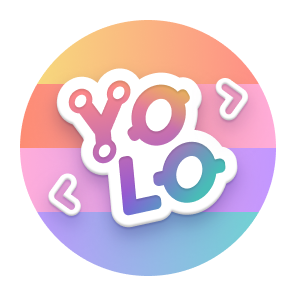AI Engineer specialized in building production-ready multi-agent systems, intelligent workflows, and Gen AI integrations. I help startups and enterprises automate decision-making, reduce costs, and launch faster using cutting-edge LLM tooling and agent frameworks.
♦ 20+ years of total experience in Software engineering and Systems Architecture. Providing software services & solutions to various industry verticals in most reliable & consistent manner, assisting the industries to make their businesses more successful with optimum costing structure and rapid ROIs execution plans.
♦ 3+ years of Experience in AI Engineering, Agentic AI, Workflow automation, Machine Learning, RAG, LLMs
♦ 12+ years of Experience in DevOps, DevSecOps, Cloud Engineering/Architect
♦ Proven Long term engagements with clients, consistent and reliable performance
♦ Prog Lang: ▪ Java ▪ Node.js/TypeScript ▪ Python ▪ Bash
♦ Saved $12K/month by replacing OpenAI APIs with quantized local models
♦ Achieved 4x faster processing in onboarding workflows with AI orchestration
♦ Prog Lang: ▪ Java ▪ Node.js/TypeScript ▪ Python ▪ Bash
From LLM-powered AI Agents to ML infrastructure orchestration, specialize in solving complex challenges with a focus on reliability, cost-efficiency, and governance.
🔭 Find me on:
- 🌐 https://www.linkedin.com/in/rishirajbansal
- 🌐 https://www.rishirajbansal.com
- 📬 rishi@rishirajbansal.com or rishiraj.specialist@gmail.com
♦ HealthCare (https://www.engagedmd.com, https://www.visibleep.com)
♦ FinTech (RBS, Western Union Money Transfer, NCR/Diebold ATMs)
♦ ITTech (https://www.fitrix.com)
♦ Manufacturing/Retail (https://www.ghirardelli.com, https://www.e-supplylink.com)
▪ HIPAA ▪ NIST ▪ SOC 1/2/3 ▪ PCI-DSS ▪ GDPR ▪ CCPA ▪ SEC
- AI-driven customer support agents (voice/chat)
- Document agents for OCR-based extraction and validation (OCR + LLM)
- Voice-interactive AI using Vapi, and Voiceflow
- Intelligent RAG-based knowledge assistants
- Workflow automation for sales, HR, and ops using agents
♦ AI Agents Design & Development
♦ Agentic AI with Multi-Agent Architecture
♦ LLM Integration & Customization, training with datasets to innovate new models
♦ AI Workflow Automation
♦ AI Frameworks
♦ Local AI & Private Model Hosting
♦ AI Orchestration & Control Plane
♦ Agentic RAG
♦ MCP (Model Context Protocol)
♦ Data Management & Vector data stores, indexing, quantization, searching, reranking
♦ Deployments: Cloud Platoforms (AWS, Azure), on-premises, containerization, Model serving, CI/CD Pipelines
♦ Computer Vision Capabilities: OCR, Text detection, Objects detection, Image properties, Detecting web entities
♦ Observability, Evaluation, Tracing
♦ GGUF, Quantization, LLM Families
♦ Cloud Infra Setup/Automation
♦ Containerization, Orchestration
♦ Security & Governance
- Designing intelligent autonomous agents with role-specific capabilities, enabling task execution through reasoning, memory, planning, and tool use.
- Implementing reactive, proactive, learning and goal-driven agent behaviors using LLM backbones and structured control mechanisms.
- Integrate APIs, knowledge bases, and external tools to empower agents with real-world utility and multi-functionality.
- Designing agent lifecycle hooks (init, task, feedback, memory reset)
- Handling context windows, memory management, and retries
- Designing scalable AI systems using multi-agent patterns like parallel, sequential, router, loop, and aggregator for orchestrating complex workflows.
- Inter-agent communication and collaboration through shared memory, messaging protocols, and dynamic task delegation.
- Applying diverse agent architectures including Reactive, Deliberative, Hybrid, Neural-Symbolic, and cognitive models like SOAR and ACT-R.
- Building real-world multi-agent systems using frameworks like CrewAI, LangGraph, and OpenAI Agents SDK to deliver autonomous, tool-using AI agents.
- Embed LLMs (OpenAI GPT, Claude, LLaMA, etc.) into agent workflows, leveraging APIs or local deployments.
- Fine-tune or prompt-tune models using domain-specific data, enabling context-aware and customized outputs.
- Handle model evaluation, versioning, latency optimization, and fallback logic for robust deployments.
- Maintaining and optimizing prompt libraries
- Evaluating prompt performance over time
- Integration with dashboards for prompt experimentation (e.g., PromptLayer, WhyLabs)
- Use task chaining, memory recall, context injection, and tool calling to handle dynamic inputs and variable outputs.
- Building rule-based AI workflows that trigger on real-time events — such as incoming emails, CRM updates, or form submissions — to auto-classify, summarize, respond, or escalate based on pre-set business logic.
- Building automation pipelines integrating LLMs with tools like Gmail, Slack, Notion, HubSpot, and Calendly — automating reminders, lead responses, scheduling, and ticket management.
- Enabling seamless AI-driven actions like parsing documents, generating insights, sending alerts, updating records, or notifying teams — with fallback/retry logic and webhook support.
- Optimizing internal operations and customer engagement by combining agentic reasoning with structured flows — delivering faster decisions, reduced manual workload, and high reliability.
- Modular Framework Proficiency: Deep hands-on experience with LangChain, LangGraph, CrewAI, and OpenAI Agents SDK to implement modular AI systems, supporting agent lifecycle control, role-based task execution, and dynamic tool invocation.
- Tool Integration & Chaining: Design and optimize complex prompt chains with integrated tools (APIs, DBs, vector stores, scrapers, browsers) to enhance agent context, enable decisions, and ensure reliability across workflows.
- Prompt Routing & Control Logic: Implement advanced routing mechanisms using prompt selectors, retrievers, and context windows to ensure efficient handling of multi-turn conversations and decision trees.
- Workflow Governance: Embed observability, guardrails, and fallback strategies within AI pipelines, enabling transparent monitoring, auditing, and fine-tuning across real-world use cases.
- Deploy LLMs locally using tools like Ollama, LM Studio, or Text Generation WebUI for air-gapped or regulated environments.
- Quantize and compress models using GGUF, GPTQ, and AWQ to optimize performance on edge devices or limited hardware.
- Enable private AI operations without external API dependencies, preserving data privacy and operational sovereignty, cost-effective and customization
- Build orchestrators to manage agent lifecycle, prompt flows, memory state, feedback loops, and fallback/retry mechanisms.
- Incorporate control-flow logic, decision trees, conditionals, and loop mechanisms within agent pipelines.
- Enable monitoring, observability, audit logging, and recovery in long-running or stateful agent tasks.
- Implement vector-based search and retrieval systems using Pinecone, Weaviate, ChromaDB or Qdrant
- Design chunking, embedding strategies (OpenAI, Cohere, HuggingFace), indexing, filtering, and reranking pipelines.
- Secure and scale vector DBs with encryption, sharding, and tenant separation as needed.
- Integrate CV modules into agent workflows to enable image parsing, document processing, layout analysis, and object recognition
- Use models/APIs for OCR, table detection, image classification, semantic segmentation, and web entity extraction
- Combine CV outputs with LLM reasoning for rich multimodal agent capabilities
- Design and implement MCP that define how multiple models (LLMs, CV, ASR, classifiers, etc.) interact intelligently in an orchestrated environment
- Enable dynamic model routing, composition, and coordination — where agents decide at runtime which models or tools to call, in what order, and with what parameters
- Optimize cross-model communication using shared memory constructs, context adapters, and role-specific prompts, improving task decomposition and modularity
- Apply MCP frameworks to build scalable, resilient AI systems in multi-modal, multi-stage environments (e.g., document workflows, customer journey automation, enterprise process intelligence).
- Architecting advanced Agentic RAG systems where autonomous agents handle retrieval, filtering, synthesis, and citation — going beyond traditional RAG by adding reasoning, planning, and decision logic.
- Design intelligent retriever-reader-planner loops, where agents collaborate to pull relevant data, validate it, and formulate grounded, accurate responses with transparent attribution.
- Implement layered vector search strategies (semantic + keyword), followed by multi-pass re-ranking and summarization, improving recall without hallucination.
- Integrate domain-specific memory (structured + unstructured) and long-term vector stores into the agent’s context, enabling adaptive recall and knowledge continuity across sessions.
- Track model behavior, token usage, latency, and accuracy in real-time with dashboards and logs.
- Comprehensive LLM Observability: Monitor agent behaviors, user interactions, and API usage with full session-level visibility—essential for debugging and ensuring output consistency across unpredictable LLM runs.
- Evaluating Pipelines & Alerting: Implement automated eval pipelines, online testing, and alert systems to detect hallucinations, performance regressions, and degraded response quality in real time.
- Real-Time Monitoring & Failure Detection: Leverage live dashboards, session replays, and intelligent error tracking to identify agent failures, tool misuse, or broken multi-agent coordination quickly and efficiently.
- Cost & Tooling Analytics: Gain insights into LLM/API cost consumption, external tool usage patterns, and end-to-end session analytics to optimize spend and improve agent reliability.
- Deployment management of agents on cloud-native platforms like AWS, Azure, or in secure on-prem environments.
- Containerize models and orchestration layers using Docker/Kubernetes for portability and scale.
- Build CI/CD pipelines to automate build, test, deploy, and rollback for agent systems.
- Implement security best practices including prompt injection prevention, secrets management, API rate limiting, and RBAC
- Conduct threat modeling and align systems with regulatory frameworks (HIPAA, GDPR, SOC2)
- Use validation layers and guardrails (e.g., Rebuff, Guardrails.ai, LMQL) to constrain and verify model outputs.
- Deep understanding of GGUF, GPTQ, AWQ, and other quantization formats for efficient model inference.
- Capable of evaluating models based on architecture, context window, hardware requirements, and downstream performance.
- Stay current on quantization advances, tokenizer optimizations, and architecture benchmarking (MMLU, MT-Bench, etc.).
-
'Core Value' award from Sapient Corporation (US)
-
‘Technocrat’ award from Royal Bank of Scotland (UK)
- Capabilities: Streaming, Using Tools, Image/Video/Voice, Optimization, Prompts, Extended Thinking, Guardrails
- Models: OpenAI, Anthropic Claude, Cohere, Llama
- Quantized Models: GGUF, GPTQ, AWQ
- Model Serving/Deployments: Hugging Face, Ollama, LM Studio, LLMLite, Text Generation WebUI, llms.txt
- Capabilities: Prompts, Chaining, Structured Output, Tools, Runnnables, Vector Stores, Streaming, Retrievers, Graphs/Nodes/Edges, Scalability
- Frameworks: LangChain, LangGraph, CrewAI, AutoGen, OpenAI Agents SDK
- Low Code Platform: LangFlow, Relevance AI
- Orchestration Patterns: Planner-Executor, Chain of Thought, ReAct, Reflection
- Memory & State: LangMem, Redis, Chroma
- MCP (Model Context Protocol): Model coordination and intelligent routing
- Agentic RAG: Retrieval agents with goal-aware data enrichment
- Capabilities: Searching, Indexing, Filtering, Reranking, Quantization
- Databases: Pinecone, Weaviate, Qdrant, ChromaDB
- Embedding Models: OpenAI, Hugging Face Transformers, Cohere
- Indexing & Retrieval Enhancements: Chunking, Reranking, Quantization, Hybrid Search
- Capabilities: Transformers, Diffusers, Datasets, Tokenizers, timm, Hub, Inference
- Model Hub: Hosting, loading, fine-tuning transformer models
- Transformers: Custom pipelines for NLP, CV, and multi-modal tasks
- Model Deployment: Inference Endpoints, Spaces, Accelerated Transformers
- Capabilities: Prompt Chaining, Parallelization, Orchestration, Routing, Custom Functions
- Integration & Triggers: Gmail API, Slack API, Twilio, Calendly, HubSpot, Zapier, Webhooks, REST APIs
- Automation Platforms: n8n, Relevance AI, LangFLow, custom LLM-integrated flows
- Voice & Dialog Systems: Voiceflow.ai, Vapi for multimodal interaction
- CRM/Data Management: Airtable, Notion
- End-to-End Workflows: LLM → Tool → Agent → API → Slack/Email → Evaluation
- Capabilities: OCR & Text Detection, Object Detection & Image Segmentation, Handwriting recognition, table extraction, Invoice parsing, Image Analysis & Metadata Extraction
- Tools: Google Vision API, AWS Textract, Tesseract OCR, EasyOCR, OpenAPI, Claude API
- Computer Vision & Agent Workflows:
- Image-to-insight pipelines using LangChain or CrewAI for OCR → Text → RAG
- Playwright-driven browser agents with CV to extract info from images, charts, dashboards
- Image-to-insight pipelines using LangChain or CrewAI for OCR → Text → RAG
- Capabilities: Observability, Logging, Tracing, Cost Control, Failure Detection, Spans, Caching, Agent Testings
- Tools: LangSmith, AgentOps, LangWatch, LangFuse, LangTrace
- Tracing Agents: Function-level tracebacks, memory graphing, and execution flow visualization
- Containerization & Orchestration : Docker, Kubernetes, Helm, Kustomize
- Model Serving: TorchServe, Triton Inference Server, TGI, vLLM
- CI/CD: GitHub Actions, GitLab CI, Jenkins
- Cloud Platforms: AWS (ECS, EKS, SageMaker), Azure (Container Apps, ML Studio)
- Proxy & Networking: Reverse Proxy Configs, NGINX, Cloudflare Tunnels, Custom Proxy Managers
- Prompt Protection: Guardrails AI, Rebuff
- Access Control: OAuth2, RBAC, API Gateways
- Compliance Alignment: SOC 2, HIPAA, GDPR, ISO 27001
- Secrets & Vaults: HashiCorp Vault, AWS Secrets Manager
- Data Handling: PII scrubbing, prompt validation, payload encryption
- Prog. Languages: Python, Node.js, Bash, TypeScript
- Python Packages/Frameworks: FastAPI, Numpy, Pandas, Matplotlib
- Coding Agents/IDE: Claude Code AI, Cursor AI, Windsurf, VS Code
- Notebooks: JupyterLab, Google Colab
- AI Interface Tools: Streamlit, Gradio
- Browser Emulation: Playwright for web automation and agent-driven browsing
- Full-stack Agent Portals: LLM backends with FastAPI + Streamlit frontend integrations
- Autonomous web-browsing and structured web data extraction using Firecrawl
- Browser emulation and UI automation for autonomous agents using PlayWright
✓ Automate business workflows using intelligent LLM agents and multi-step orchestration.
✓ Accelerate AI product launches with scalable, production-ready deployment pipelines.
✓ Optimize cost and performance with local/quantized models and dynamic prompt routing.
✓ Improve reliability via real-time evaluation, tracing, and hallucination detection.
✓ Secure AI systems with prompt validation, access control, and compliance alignment.
































